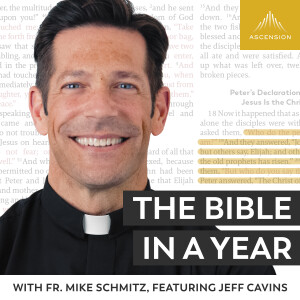

he will be raised and lifted up and highly exalted.
14 Just as there were many who were appalled at him –
his appearance was so disfigured beyond that of any human being
and his form marred beyond human likeness –
15 so he will sprinkle many nations,
and kings will shut their mouths because of him.
For what they were not told, they will see,
and what they have not heard, they will understand.
Isaiah 52:13-15
10 Yet it was the LORD’s will to crush him and cause him to suffer,
and though the LORD makes his life an offering for sin,
he will see his offspring and prolong his days,
and the will of the LORD will prosper in his hand.
11 After he has suffered,
he will see the light of life and be satisfied;
by his knowledge my righteous servant will justify many,
and he will bear their iniquities. Isaiah 53:10-11
Following his betrayal he is now facing trial in a Roman court, being interrogated by Pontius Pilate. Now, as we look together briefly at John 19, let us see what happened to Jesus Christ – His condemnation, crucifixion, death and burial.
Pilate gave in and permitted the flogging and mockery in the hope of shaming Jesus’ accusers (John 19:1-3). Pilate affirmed Jesus’ innocence after the scourging (John 19:4). Jesus’ refusal to answer stung Pilate into reminding Jesus of his Roman authority (John 19:10). Jesus, however, corrected Pilate’s idea of authority and told him that although Pilate may have power on earth, Jesus’ power reached beyond earth (John 19:11). Jesus knew that his work of bring people back to God in a loving relationship did not rest on the actions of a mere Roman governor. Pilate was more concerned with his own position than he was for justice. In all this, we see Jesus as the true Passover lamb.
Jesus bearing his own cross, was killed as a common criminal (John 19:17). We read, that Pilate was responsible for fixing the sign “The King of the Jews” (John 19:21-22). The clothes of condemned prisoners were given to soldiers on duty (John 19:23). Even when he himself was in agony, Jesus showed concern for his mother, committing her to the Apostle John (John 19:26-27).
The crucifixion site “was purposely chosen to be outside the city walls because the Law forbade such within the city walls… for sanitary reasons… the crucified body was sometimes left to rot on the cross and serve as a disgrace, a convincing warning and deterrent to passers-by.” Sometimes, the subject was eaten while alive and still on the cross by wild beasts. Jesus’ face was beaten beyond recognition. The scourging reduced his flesh to something like raw hamburger mince. The whips used has pieces of glass and rocks stuck to the cord so as to inflict as much damage as possible. He had a crown of thorns pushed into his scalp.
In Jesus’ final moments he uttered “I am thirsty.” (John 19:28) and “It is finished.” (John 19:30). The desire of the Jews (John 19:32) to fulfil their rituals was important because the Sabbath fell within the Passover festival. The breaking of legs (John 19:32-33) sped up the process of death. The piercing of Jesus’ side, and the flow of blood and water proved Jesus was really dead (John 19:34).
Joseph of Arimithea and Nicodemus buried Jesus. The significance of “in which no-one had ever been laid” (John 19:41) is to demonstrate that the body of Jesus at no point came into contact with the decay of a dead body. But his burial is not the end of the story. Tomorrow we will look at some of the other character & events that happened around the cross, and then on Sunday we will look at the end of the story. But before we leave today, lets investigate what Jesus’ death on a Roman cross two thousand years ago means for humanity today and why He had to die on a cross in the first place.
What Has Jesus’ Death Done For All Humanity?All human beings, in their natural state, are born sinners and have rebelled against God (Romans 3:23). However, because of Jesus’ death on the cross God offers forgiveness (Ephesians 1:7), Peace (Romans 5:1) and reconciliation with God, so that we are no longer His enemies (2 Corinthians 5:19). Through the cross, and only through the cross of Jesus Christ, we are made just before God (Romans 3:24-26), it cleanses us from sin (1 John 1:7) and makes us right before Almighty God (2 Corinthians 5:21). Because of the Cross, we have direct access to God (Ephesians 2:18) and Jesus Christ intercedes for us (Hebrews 2:17-18). Because of Jesus Christ’s death on a Roman cross, all those who follow Him have freedom from the power of slavery to sin (Galatians 5:1) and freedom from the power of the devil (Hebrews 2:14). None of the above things are true if we do not follow Jesus.
Click or Tap here to listen to or save this as an audio mp3 fileClick or tap on the appropriate link below to subscribe, share or download our iPhone App!
More Episodes
All Episodes>>You may also like
Create Your Podcast In Minutes
- Full-featured podcast site
- Unlimited storage and bandwidth
- Comprehensive podcast stats
- Distribute to Apple Podcasts, Spotify, and more
- Make money with your podcast












